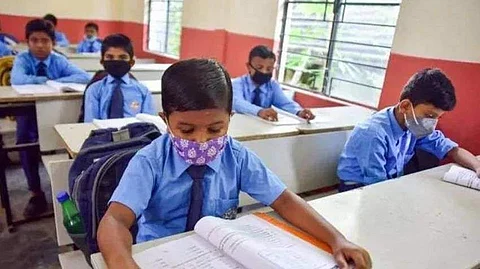

The central government's public policy think tank NITI Aayog has stated 11 ways to improve the nation's school education system with a special focus on learning outcomes and effective implementation of National Education Policy 2020.
The recommendations were released as part of a report called Systemic Transformation of School Education on Tuesday and are based on findings of NITI Aayog's Sustainable Action for Transforming Human Capital (SATH-Education) initiative that was begun in 2017 to build three 'role model' states — Jharkhand, Odisha and Madhya Pradesh — for the school education sector.
According to officials, the steps implemented by these states under this initiative have led to an average 20% improvement in the education system in the last few years. “It is imperative that we make school education, especially, at the preschool level, more inclusive. In our school-level learning process, no one should be left behind or have disadvantages,” NITI Aayog vice-chairman Rajiv Kumar said while addressing a webinar on SATH-E initiative.
The report suggested interventions in five key areas - focus on academic reforms, strengthening human capacity, creating a shared vision for change, driving accountability and strengthening administrative systems. The report said that the learning outcomes did not cause improvement in quality of education despite having ensured near-universal access to education with over 96 per cent enrolment of students in the age group of 6-10 years.
To find a solution to this issue, the report suggests the states should prepare a Learning Outcome Framework (LOF). Haryana has come up with a unified LOF called Saksham Taalika for classes I to V for English, Mathematics and Hindi. Jharkhand, meanwhile, has developed the Learning Tracking Format to gauge student-wise learning levels on key competencies for classes I to VIII.
The report also suggested the need to simplify the assessment process and the need to learn enhancement programmes. For bridging the learning gap remedial measures are necessary but they won't be a solution in the long run. The report in this regard said, “States need to implement remediation in campaign mode for 4-5 years to bring all children to grade-level."
The problems in most states are almost similar, said an official. "These implementation toolkits can be used by state governments to address specific problems. We have given in detail how these measures can be implemented. All the solutions suggested are based on the experience of these seven states (mainly three states part of SATH-E initiative),” the official added on condition of anonymity.
